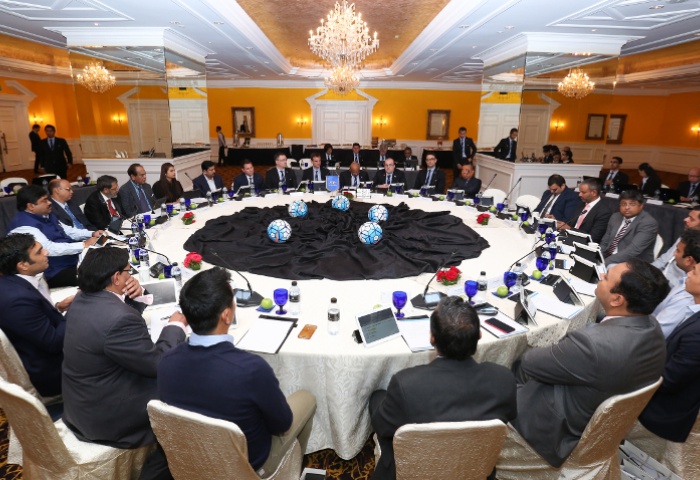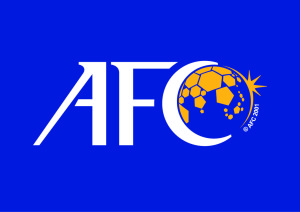By Samindra Kunti
June 8 – Defining a single structure for professional league football in India remains a work in progress after a meeting between officials of the AFC and stakeholders in the Indian game agreed to a road map of further research and discussion towards a long term league solution.
In the short term the All India Football Federation (AIFF) will decide the format of the leagues “with the decisions on the medium and long-term pathway being taken as soon as possible after the FIFA U-17 World Cup, held in India later this year,” said an AFC statement.
The Indian Super League, founded in 2013, wants recognition as the country’s top division, but obtaining that status is fraught with complications.
The ISL operates with franchises and demands entry fees of Rs 15 crore (about $ 2.3 million). The ISL also limits the number of franchises geographically which is problematic in Calcutta, a hotspot for the Indian game with traditional I-league clubs Mohun Bagan and East Bengal powerhouses of the Indian club game. Atlético de Kolkata plays in the ISL.
The biggest difference between the leagues is the money available to clubs. Only three clubs in the I-League – the two Calcutta clubs and Bengaluru FC – have an annual budget close to or more than 10 crore (about $1.5 million). The I-League provides India’s representatives in AFC competitions.
With this background of disparity, the AIFF has struggled to find resolution between the leagues or a platform for coherent progression with Indian stakeholders unable to agree.
The purpose of the meeting at AFC headquarters in Kuala Lumpur, Malaysia, was to accelerate meaningful discussion towards a unified strategy. “Stakeholders in Indian football have agreed a clearly defined road map to create the right structure for Indian club football in the coming years which would culminate in a new and sustainable future for the game across the country,” said an AFC statement.
The meeting was chaired by AFC general secretary Dato Windsor John and attended by officials of the AIFF, their marketing and commercial partners IMG-Reliance (IMG-R), club representatives from the I-League and the Indian Super League (ISL), former India captain Bhaichung Bhutia and an official from India’s sports ministry.
The blue print for a road map made a distinction between short and long terms solutions to the schism in Indian football. The release stated that “independent research would be commissioned and analyzed before being evaluated by the AIFF and the stakeholders, with the decisions on the medium and long-term pathway being taken as soon as possible after the FIFA U-17 World Cup.”
Following the meeting John said: “There was a desire by people, who are extremely passionate about the game, to marry the strengths of both the traditional and the new…The objectives were clear; to help provide a road map for the future development of Indian football by reaching a consensus on the way forward. It was a significant step forward that there was unanimous agreement that the right structure for the game should be paramount… There is no doubt that Indian football has huge potential, and the meeting was convened so that potential could be realised.
“There is a need to find solutions which ensure that Indian football is protected and that there are opportunities for young players, who must not be lost to our game.”
Kushal Das, the AIFF General Secretary, echoed the importance of a long term solution but also turned his focus to the short term requirements: “We are grateful to the AFC for facilitating the meeting which is crucial to the development of football in India. We must go through this process to create the best future for the game in our country. In the meantime, we have to decide on the short-term future of the game as soon as possible.”
Contact the writer of this story at moc.l1745721070labto1745721070ofdlr1745721070owedi1745721070sni@i1745721070tnuk.1745721070ardni1745721070mas1745721070


